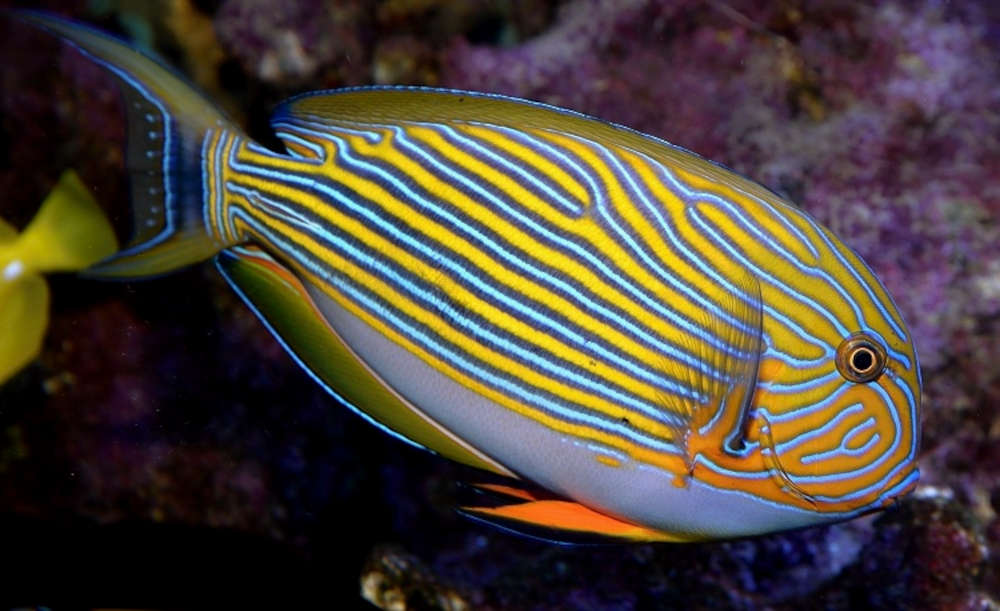
Glossary:
Clown tangs—scientific name Acanthurus lineatus—are colorful and potentially large additions to a saltwater tank that can make it more lively than ever. The main problem with this fish is the fact that it’s difficult to maintain.
Considering getting a Clown tang for your tank? The following Clown tang care guide will let you know what to expect with this fish.
Unlike other types of surgeonfish that tend to nip at coral, the Clown tang doesn’t present a risk to any coral. They’re also herbivorous, meaning they won’t go after any invertebrates in your tank. Because of this, the Clown tang is entirely reef-safe.
The Clown tang is easy to feed on a herbivorous diet of algae. You can also feed them seaweed. In addition, you can feed them a mix of proteins in the form of frozen or live inverts such as brine and Mysis shrimp, krill, and Tubifex worms, among others.
Unfortunately, the Clown tang isn’t the easiest fish to maintain. The majority of Clown tangs fail to adapt properly in captivity and tend to die, but you might have better luck with smaller members of this species. They’re prone to disease and require optimal tank settings to keep them healthy.
The Clown tang needs plenty of room to swim, and they tend to reach about a foot long as adults, meaning you’ll need a big tank for this species. The ideal tank size for this species is around 250 gallons, but you can keep juveniles in smaller tanks.
Tangs take a total of around five years to reach their full size, with females reaching sizes of around 12” when fully grown. They can also live for a long time with the right care, with species in the wild known for living a whopping 30 to 45 years, although you probably won’t see them live as long in captivity, where they don’t tend to flourish.
If you want to buy this fish, keep in mind that the Clown tang is often pricey. You’ll find this species on the market for around $60 to $200 or even more, depending on the size and other contributing factors. Shop around to find the right fish for your aquarium.
Here are a few facts you might be interested to know about the Clown tang:
Clown tangs, like other tangs, don’t tend to get along well with each other, especially if you have a tank with more than one male. They may do well together as juveniles in schools, but they’ll grow into bullies as they mature. You can keep them in breeding pairs, but multiple tangs only tend to do well with each other if you have a male with a harem of multiple females, and even then you’ll need to give them plenty of space to roam.
Keep in mind that Clown tangs will go after any non-tangs that resemble them, too, meaning you must be selective about the kinds of colors and patterns of tank mates. However, tangs often do get along with other species, as long as there’s no mistaking them for other Clowns.
Wondering where to find a Clown tang for your tank? Check out the following online shops:
The Clown tang is a popular fish among more experienced aquarists, but you’ll need to take great care to enable them to flourish. If you have the experience, patience, and proper tank settings to maintain this species, it might be a good fit.